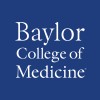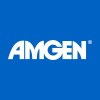
Efficacy of Laser Debridement on Pain and Bacterial Load in Chronic Wounds
Wound OpenChronic Venous Hypertension (Idiopathic) With Ulcer1 moreBacterial load is frequently associated with impaired healing of chronic wounds. As well, sharp debridement is often associated with pain, causing patient distress, and thereby occasionally contributing to inadequacy of debridement, leading to a delay in wound healing. The purpose of this study is to assess the efficacy of the Sciton Laser in reducing bacterial load and patient distress in patients with chronic wounds, in efforts to expedite the wound healing process.

Dose-response Relationship Study of S42909 on Leg Ulcer Healing
Venous Leg UlcerDose-response relationship study of S42909 on leg ulcer healing after oral repeated administration in patients with active venous leg ulcer.

ABX464 in Subjects With Moderate to Severe Active Ulcerative Colitis
Ulcerative ColitisThis Phase IIa study is an 8-week, double-blind, placebo-controlled, randomized study aiming at evaluating the safety and the efficacy of ABX464 given once a day (o.d) at 50 mg in subjects with moderate to severe Active Ulcerative Colitis who have failed or are intolerant to immunomodulators, Anti-TNFα, vedolizumab and/or corticosteroids followed by a one-month follow-up period.

Single Ascending Dose and Multiple Ascending Dose Study in Healthy Participants and Proof of Mechanism...
Healthy VolunteersUlcerative ColitisThe primary purpose of this study is to determine if single and multiple doses of BMS-986184 are safe and well tolerated in healthy male and female subjects. The primary purpose of the proof of mechanism study is to determine safety and efficacy in patients with ulcerative colitis.

Comparative Effectiveness of Two Acellular Matrices (Dermacell vs. Integra) for Management of Deep...
Diabetic Foot UlcerDeep Diabetic Foot UlcerDiabetes-related foot ulcers (DFUs) are a leading cause of hospitalization and amputation worldwide, and account for 33% of all direct costs of diabetes care in the US. Ulcers requiring acute care can result in treatment costs of up to US$70,000 per event, varying with the severity of the wound. Once the skin is ulcerated, it is susceptible to becoming infected and ultimately amputation in particular in case of deep DFUs. To manage the cost and avoid hospitalization and amputation, wound should be immediately closed. But this is often challenging in diabetic foot with deep ulcers.Wound healing is a dynamic process involving interactions between cells, extracellular matrix (ECM) and growth factors that reconstitutes tissue following injury. ECM plays an important role in tissue regeneration and is the major component of the dermal skin layer. Recognition of the importance of the ECM in wound healing has led to the development of wound products that aim to stimulate or replace the ECM in particular in case of deep tissue destruction because of deep DFUs. It is known from the literature that chronic or hard-to-heal wounds are characterized by a disrupted or damaged ECM that cannot support wound healing. Thus treatment strategies based on use of biologic scaffold materials for management of chronic and deep wounds has increased dramatically during the past two decades. These scaffolds include those comprising an intact extracellular matrix (ECM) or individual components of the ECM, and those comprising hybrids incorporating a synthetic component with a biologic component. DermACELL (LifeNet Health,Virginia Beach, VA) is acellular dermal matrices (ADM), which has been shown to be effective in treating chronic DFUs in a clinical trial. Another ADM product available in the market is made by Integra® (Bilayer Matrix Wound Dressing, Integra LifeSciences). However, advantages/disadvantages of one compared to the other are unclear. In addition, prior studies often focused on wound healing outcomes (e.g. time to heal, success of wound healing) without considering patient-centered and physician-centered outcomes such as time and difficulty to apply, likelihood of adverse events and need for reapplication, poor tissue mechanics outcomes (e.g. presence of scarring or tissue biomechanics properties leading to increase in shear or pressure post healing thus increasing likelihood of recurrence of the ulcer), and other patient centered outcomes like smell, pain, and comfort. The primary objective of this prospective, randomized trial is to compare the outcomes of DermaCELL with Integra. The investigators assumed that the wounds outcomes (e.g. weekly wound size change, time to heal, time to successful wound granulation) are comparable between DermaCELL and Integra. However, from operation and patient centered outcomes, there may be some noticeable differences. For instance, DermaCELL, thanks to its mesh structure, thin thickness, and no need for hydration, may be easier to apply with shorter time than Integra. The factors are of key importance in operation room (OR) setting and could reduce overall cost of application and needs in using OR resources. Other important outcomes least addressed in prior studies are number of grafts failing, adverse events (e.g. amputation, infection, etc), cost of wound healing treatment, tissue biomechanics, which may lead to recurrence of ulcers (e.g. formation of tissue scarring), and other patient-centered outcomes (e.g. pain, quality of sleeping, wound smelling, etc). For instance, many patients are unhappy with smelling of wounds, which make them embarrassed among their family members like grand kids. Thus reducing wound smelling during activities of daily living is often considered as an important patient centered outcomes.

Larval Debridement Therapy Versus Sharp Debridement to Remove Biofilm
Lower Extremity or Diabetic Foot UlcersBacterial InfectionThis is a prospective study of Veterans with chronic lower extremity or diabetic foot ulcers who will be randomized to either a Larval Debridement Therapy group (Biobags every 4 days x 2 applications) or a Sharp Debridement Therapy group (standard or control weekly x 2) during an 8 day study period.

Use of a Novel Diet (UC DIET) for Treatment of Mild to Moderate Active Pediatric Ulcerative Colitis...
Ulcerative Colitis (UC)The goal of the study is to evaluate strategies that target the microbiota for the treatment of Ulcerative Colitis , This study will involve a novel diet that the investigators developed , based on the hypothesis that UC involves dysbiosis , underutilzation of certain metabolic pathways and use of pathways that increase risk of inflammation . The investigators have postulated that manipulation of colonic bacterial metabolism with this diet will induce remission in UC without involving additional immune suppression.

Study to Evaluate Safety, Tolerability, Pharmacokinetics and Pharmacodynamics of AMG 181.
Ulcerative ColitisCrohn's DiseaseTo assess the safety and tolerability of multiple subcutaneous doses of AMG 181 in healthy subjects, in subjects with active ulcerative colitis, and in subjects with active Crohn's disease.

Correlation Between Wound Volume and Depth of Decubitus Ulcers And Resting Energy Expenditure
Decubitis UlcerPatient nutritional needs vary depending on several factors including age, sex, height, weight, injury and co-morbidities. Since injury affects energy expenditure in patients, this must be taken into account when assessing nutritional requirements. Indirect calorimetry will be used to measure energy expenditure of patients with decubitus ulcers of varying degrees. The primary objective of this study is to determine the effects of wound volume on metabolic rate and compare this to predictive equations used for estimating energy requirements.

Study Investigating the Safety and Efficacy of HP802-247 in the Treatment of Venous Leg Ulcers >12...
Venous Leg UlcersThis study is being done to find out if an investigational product called HP802-247 can help people with venous leg ulcers. Investigational means that HP802-247 has not been approved by the U.S. Food and Drug Administration (FDA). At least 250 subjects will participate. The study is going to be conducted in approximately 50 sites in the United States and Canada.
